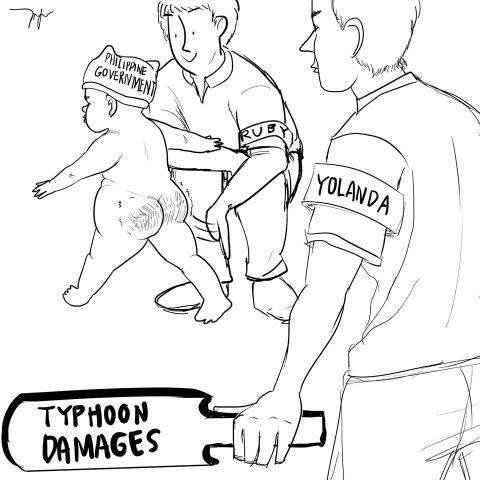18 casualties.
Considering that Typhoon Ruby was the strongest tropical cyclone to hit the Philippines in 2014 and that typhoons of lesser strength in recent years have claimed more lives, 18 casualties (as of press time) bodes well for the country’s disaster management. Even if Ruby was downgraded from super typhoon status as it crossed the Philippine Area of Responsibility, the government deserves due credit for minimizing the damage that could have been done—a marked improvement from last year’s Typhoon Yolanda disaster, which saw thousands of lives lost and millions displaced.
Ruby was classified as a Category Five typhoon, the highest rating on the Saffir-Simpson Hurricane Scale, and with this imminent threat, more than a million people were evacuated from at-risk areas. As a matter of fact, the United Nations (UN) Office for Disaster Risk Reduction called it “one of the largest peacetime evacuations in the Philippines’ history” and later on compared it to the commendable evacuation efforts in preparation for the threat of Cyclone Phailin in India last year.
Despite all the praise coming in and the noted improvements in our disaster preparedness, there is still a long way for the Philippines to go. Humans are not just numbers or statistics, and those 18 people who lost their lives should be a constant reminder that we could and should do better.
As much and more of the rehabilitation and rebuilding in Ruby’s aftermath are brought to our television screens, radios, and social media feeds, it is important to remember that typhoons are more than the floods they cause, the classes they suspended, and the overall destruction they bring. They are signs of just how much there is left that must be done.
The well-praised resilience of the Filipino people must be concretized into the finding and funding of ways to build back better. Evacuation and relief efforts must be streamlined, new evacuation centers must be built, and existing ones improved. With climate change intensifying more than ever, these improvements have to come now because typhoons and other natural disasters will definitely not wait for them. We must not stop until the number of casualties falls to zero.
In a country that experiences 10 typhoons making landfall every year on average, it is important to never get accustomed to the number of lives they claim and the damage they bring. A marked improvement must be made every year and this is a good start, but it is far from enough. 18 casualties may be better than 6,300, but it is still 18 too many. Zero might not mean anything on most occasions, but in this case, it represents lives saved and families kept together – in short, everything.


16 replies on “Fighting for zero”
ccn2785xdnwdc5bwedsj4wsndb
[…]we came across a cool web site that you simply may enjoy. Take a look if you want[…]
xcn5bsn5bvtb7sdn5cnvbttecc
[…]check below, are some absolutely unrelated internet websites to ours, on the other hand, they are most trustworthy sources that we use[…]
Title
[…]always a significant fan of linking to bloggers that I like but do not get quite a bit of link really like from[…]
Title
[…]Here are a few of the web-sites we recommend for our visitors[…]
Title
[…]Here are several of the internet sites we advocate for our visitors[…]
Title
[…]we like to honor lots of other online web-sites around the internet, even when they aren’t linked to us, by linking to them. Beneath are some webpages worth checking out[…]
Title
[…]always a big fan of linking to bloggers that I love but really don’t get lots of link adore from[…]
Title
[…]below you will locate the link to some web sites that we believe you ought to visit[…]
Title
[…]very few internet websites that transpire to be in depth beneath, from our point of view are undoubtedly properly worth checking out[…]
Title
[…]Here are a number of the sites we suggest for our visitors[…]
Title
[…]Every after in a when we pick blogs that we study. Listed below are the latest sites that we pick out […]
Title
[…]that will be the end of this article. Right here you will uncover some sites that we think you will value, just click the hyperlinks over[…]
Title
[…]below you will obtain the link to some internet sites that we consider you need to visit[…]
Title
[…]Wonderful story, reckoned we could combine a number of unrelated information, nevertheless really worth taking a search, whoa did 1 study about Mid East has got more problerms too […]
Title
[…]please go to the sites we stick to, such as this one particular, as it represents our picks from the web[…]
Title
[…]Sites of interest we have a link to[…]